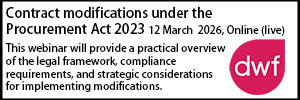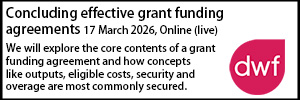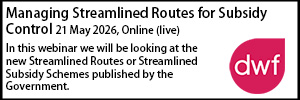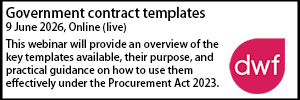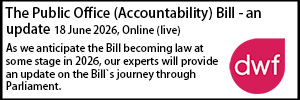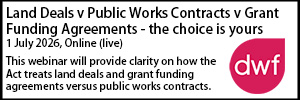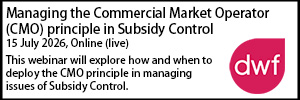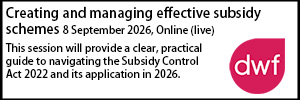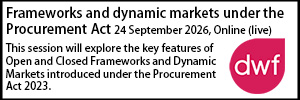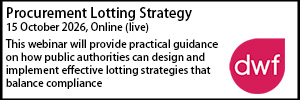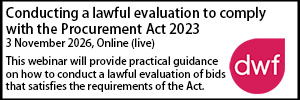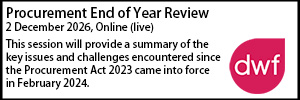EU grant funding terms
- Details
 Would your compliance with EU grant funding terms stand up to scrutiny? Tiffany Cloynes looks at the potential issues.
Would your compliance with EU grant funding terms stand up to scrutiny? Tiffany Cloynes looks at the potential issues.
The award of grant funding is usually a cause of celebration for the difference it can make to a project but anyone who has worked on grant funded activities will know that the funding is usually accompanied by conditions. A grant funder will usually monitor compliance with conditions and reserve a right to take action, including clawback of the funding, for a recipient’s failure to comply. This means that it is important to be aware of any conditions before accepting funding and to comply with any conditions when they are in force.
Many projects in the UK have received funding from programmes within the European Union. Although a lot of concern has been expressed about the loss of access to grant funding when the UK withdraws from the EU, we should also pay attention to the EU’s approach to the grants which are already being given to the UK. As the time approaches for the UK to leave the EU, we may find that the EU pays particularly close attention to compliance with the terms of grant funding and looks for opportunities to stop and claw back funding which has been provided for projects in the EU.
If you have a project which is receiving EU grant funding, you may find that time spent now in checking how your compliance would stand up to close scrutiny would be time well spent. Something which you think does not make much difference in practical terms could give the EU a right to take action against you. As a starting point, useful action to take would be:
- If you have not already done so, map out the timescales involved in your projects. Ensure that you have in one place a clear record of when grant payments are due and when clawback could be made. You need to be clear about the latest time when funding could be clawed back from you.
- Ensure that you are aware of the provisions which you or the funding body could use to terminate the arrangement. Consider the circumstances in which you might think it appropriate to terminate and make sure that you understand the process to be followed and the consequences that would follow. Identify what action you would need to take if the funding body were to terminate the contract. Assess whether you have sufficient resources to deal with this and how quickly you would be able to do so.
- Consider how any changes in your funding arrangements will affect any sub-contractors. Equally, monitor the actions of your sub-contractors sufficiently to be sure that they will not prevent you from complying with the terms of your funding agreements.
- It is assumed that when you entered into a grant agreement you will have identified any obligations which you have to meet and established a process for dealing with these. For example, you might be required to report to a funding body at particular intervals. You might be required to put projects through particular appraisal processes before releasing funding to them. Check whether you have always complied with your obligations or that you have addressed any failures.
- Go through your funding agreements in detail, looking at every requirement, no matter how small or inconsequential it might seem. For example, are you required to produce reports of a particular length or in a particular format. Are you required to use a particular style when displaying notices? Are you required to have approval from particular persons before issuing publicity? Identify any points in the agreement which show what action can be taken for failure to comply. Could failure in any of these respects lead to the funder having the right to terminate the agreement and to require you to repay funding? Check for any occasions when you have failed to comply with any requirements or any risks that you may do so in the future. If resources will allow, it will be helpful for this review of the details of your funding agreements to be carried out by a person who is not actively involved in the management of projects funded under the agreement or in the process of reporting to the funder.
- Collect and maintain clear and comprehensive evidence of your compliance with your funding conditions. Retain records of the expenditure for which your grant funding is being used and ensure that this is consistent with the funder’s expectations as recorded in your funding agreement or any associated documents. Operate and monitor your project so that it carries out the activities expected of it and that it is managed effectively. Ensure that records are accessible and easily understood, so that an auditor would find it easy to review your project and confirm your compliance with any funding requirements. Make it easy for an auditor to observe your project activities and to assess the effectiveness of your management systems.
Whilst much of the detail about the specific effects withdrawal from the European Union will have is not yet known, protecting yourself from clawback of grant funding is something within your control. You should make sure that you devote adequate resources to allow you to check thoroughly your compliance with grant conditions and to take action over any concerns that you identify. This needs to be regarded as an important issue at a senior level and throughout your organisation. If you do find any evidence of non-compliance, you should work out what you can do to rectify this and to ensure that it will not happen again. It would be worth balancing the cost of rectification against the potential impact if the breach is not rectified and the funder decides to take action. If you establish that rectifying a particular breach of a funding agreement will require extensive resources and that the funder would have the right to clawback only a small amount of funding, you might decide to take the risk of leaving the situation as it is. However, generally speaking it will be appropriate to take action to rectify any breaches of funding conditions and to address any flaws in your systems to minimise the risks of such breaches happening again. Don’t assume that a breach or a risk of breach is too small to worry about. If it gives a funder the right to take action, you should assume that the funder will do so and that could have serious consequences for your project.
Tiffany Cloynes is a partner and head of the public services team at Geldards, a firm which has extensive experience of preparing and advising on the details of agreements. The firm is also experienced in advising on resolving disputes and challenges. Tiffany can be contacted on 01332 378 302 or
Sponsored articles
Unlocking legal talent
Walker Morris supports Tower Hamlets Council in first known Remediation Contribution Order application issued by local authority
Lawyer (Planning and Regulatory)
Principal Lawyer - Planning, Property & Contract
Contracts Lawyer
Legal Director - Government and Public Sector
Senior Lawyer - Planning, Property & Contracts Team
Locums
Poll
15-07-2026 11:00 am

































